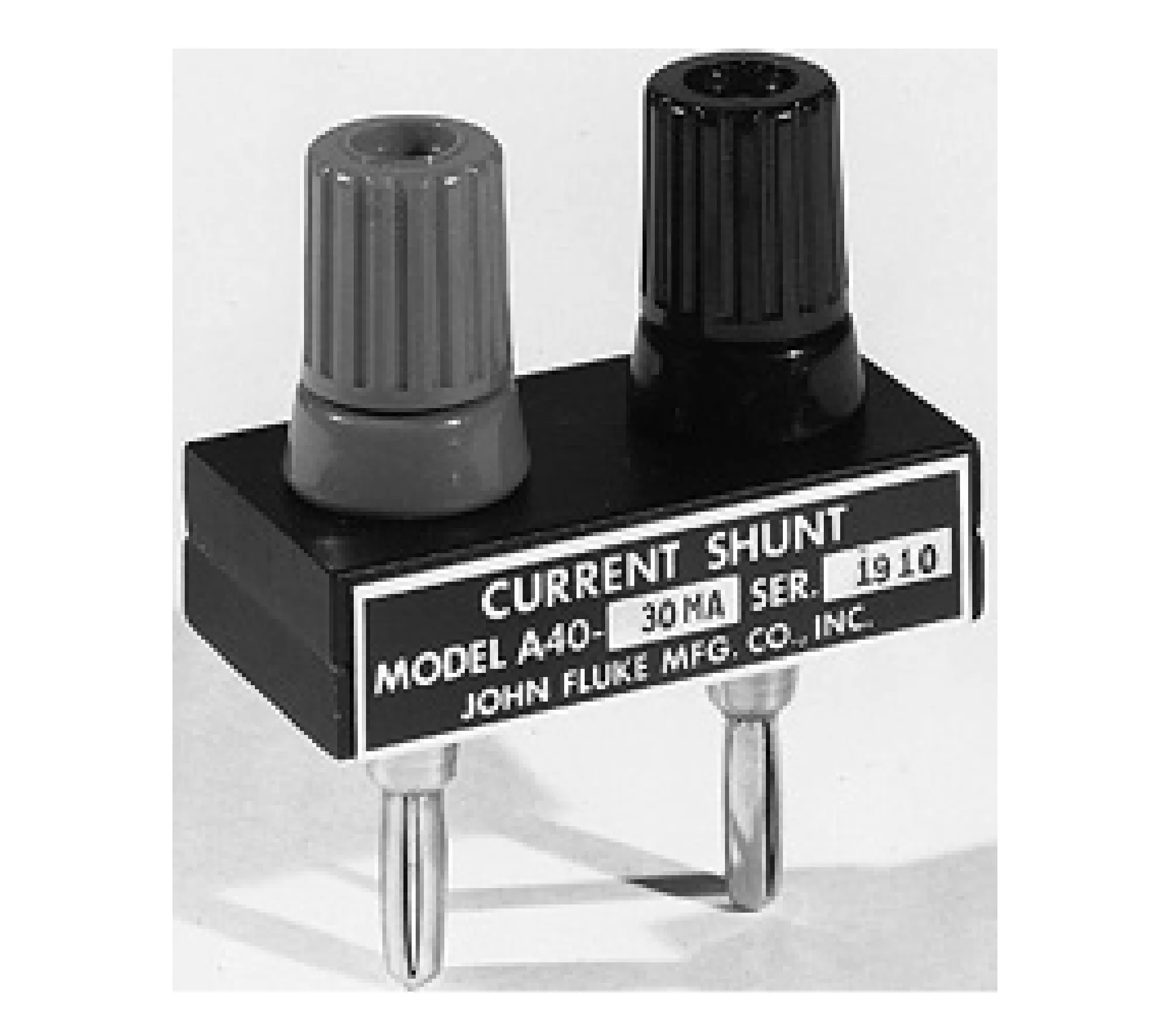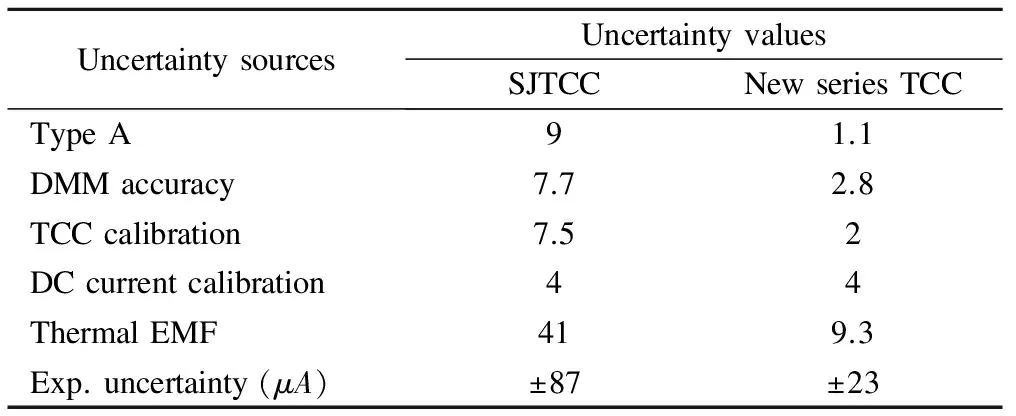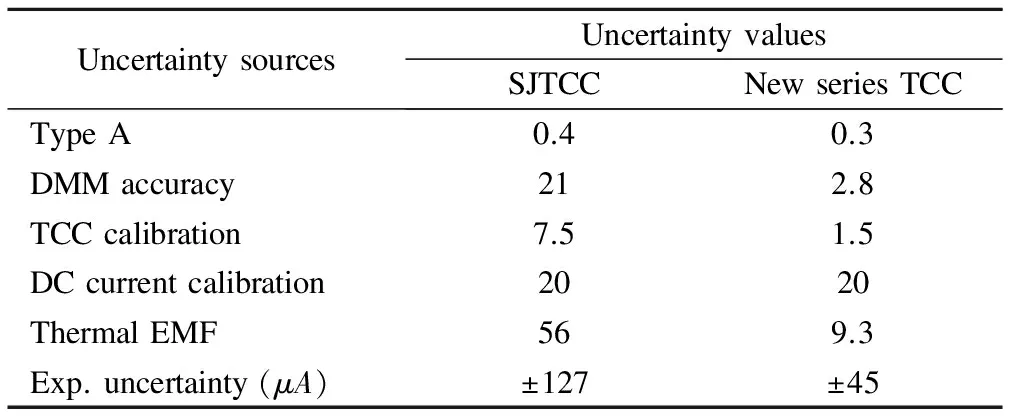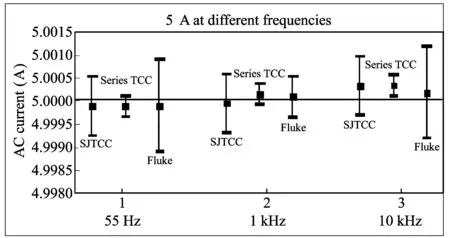AC current automatic calibration using two different TCC designs*
Rasha S M Ali
(Department of Electrical Quantities Metrology, National Institute for Standards (NIS), Giza 136, Egypt)
AC current automatic calibration using two different TCC designs*
Rasha S M Ali
(Department of Electrical Quantities Metrology, National Institute for Standards (NIS), Giza 136, Egypt)
AC currents are automatically calibrated by two different thermal current converter (TCC) designs. The two designs are different in the used number of the thermal-elements (TEs). Consequently they differ in their output electro motive force (EMF). Studying the effect of changing the output EMF is done in this paper through calibrating AC currents. 5 mA and 5 A are accurately calibrated at different frequencies 55 Hz, 1 kHz and 10 kHz by the two TCCs. A comparison is made between the results to evaluate the effect of the output EMF value on the accuracy and the uncertainty of the low and higher AC current calibration. A LabVIEW program is designed for this accurate automatic calibration to overcome the problems of the manual calibration on the thermal converters.
AC current calibrations; thermal current converter (TCC); current shunt resistor; electromotive force (EMF); AC-DC difference; uncertainty
0 Introduction
The electrical international system of units (SI) is defined and realized as DC electrical quantities. AC electrical quantities can not be directly determined in terms of SI units, so AC quantities have been determined in terms of the DC quantities. In order to determine AC quantities, it is necessary to transfer AC to DC[1]. Root mean square (RMS) values of AC currents are most accurately measured by comparing the heating effect of an unknown AC current to that of a known, stable DC signal using thermal current converter (TCC) consisting of either a thermal element (TE) alone or a TE in parallel with a precision shunt. The TE is composed of one or more thermocouples arrayed along a heater structure[2]. The TCC compares the power produced in the heater from the unknown AC current to the power produced from a stable and reference DC current which has the same nominal value depending on the fact that the AC and the dc currents have the same effective amplitude when they produce identical amounts of power in a pure resistive element[1-3]. This power is dissipated as heat. The thermocouple senses this heat and converts it to an output DC voltage electromotive force (EMF)[1]. This EMF is measured by high sensitive digital voltmeter.
When the difference between Iacand Idcis small, the proportional difference can be computed from the equation[4]
(1)
where δnis AC-DC difference correction of the TCC which is determined by comparing it to a similar standard instrument whose correction is known, δmis difference between the TCC responses due to the applied DC current and the AC current which can be obtained from
(2)

The single junction thermal current converters (SJTCC) is widely used in a lot of National Metrology Institutes (NMI) for many reasons such as its small size, low cost. But it suffers from many drawbacks, for example, it has low DC output EMF typically in the range of 7 mV which requires high sensitive voltmeter to respond precisely to the very small values of the output EMF. This leads to high uncertainty in the AC current measurements. Due to the great demand for the highly accurate measurements of the AC current in the world, many NMI tried to solve this problem by different methods. In National Institute for Standards (NIS), Egypt, a new series TCC is fabricated to solve this problem. The new TCC consists of four TEs whose heater leads are connected in series. Their thermocouples leads are always connected in series to increase the output EMF[5-6]. The series TCC has the rating of 5 mA, 360 Ω to measure the AC current from 5 mA to 20 A by using current shunts and its output EMF is around 35 mV. In this paper, a practical comparison is done to study the effect of increasing the output EMF on the low and high AC currents measurement accuracy and on their uncertainty evaluation.
1 Automatic calibration of AC currents
AC currents, 5 mA and 5A at different frequencies from 55 Hz to 10 kHz are accurately calibrated by the two different TCC designs. The first design TCC is the SJTCC, fabricated at Physikalisch-Technische Bundesanstalt (PTB), Germany, which consists of one TE with 5mA, 90 Ω rating and its output EMF is around 7 mV. The other design is the series TCC which consists of four TEs with 5mA, 360 Ω rating and its output EMF is around 35 mV. The range extension of the current transfer standards can be realized using either higher current TCC or low current TCC with the standard shunts[7]. So, in this calibration, current shunt resistor Fluke model
A40 is used to accurately calibrate the 5 A AC current. This shunt resistor is connected in parallel with the TCC. Fig.1 shows the used current shunt.

Fig.1 A40 current shunt resistor connected with TCC
This calibration of the AC current is done automatically by using a LabVIEW program through GPIB card and GPIB cables. Then, this software makes the measurements of the AC currents by using the thermal converters under computer control. In this way switching between AC and DC, and the reading of the digital multimeter (DMM) can take place at regular and precise intervals. The results are automatically saved in an excel sheet.
Fig.2 shows the circuit set-up of the automatic calibration system.

Fig.2 Circuit set-up of AC current calibration by using TCC
The circuit consists of a calibrator, Fluke model 5720A, which is the main operative instrument of the system that is the applied source of both the stable and reference DC current and the AC current; TCC, which is the SJTCC or the series TCC connected in parallel with the current shunt for 5 A range to calibrate AC currents; high precise DMM, Fluke model 8508A, 8.5 digits, which measures TCC's output EMFs; and a computer programmed with the suitable software (LabVIEW) program. The calibration system and DMM are connected to the computer through GPIB cables.
The LabVIEW program controls the system operation, such as the warming-up time, the warming-up current and the settling time which is the waiting time before recording the readings from the DMM (when the TCC is stabilized), and the applied current and the frequency required for the calibration.
2 Practical calibration results
The results of AC currents obtained from the two TCCs are compared with the actual values of the AC currents which are calibrated at Fluke accredited by DKD, Germany.
Table 1 shows the measured values of the AC currents for the ranges 5 mA and 5 A at frequencies 55 Hz, 1 kHz and 10 kHz.
It is found from Table 1 that the results of the new series TCC are closer to the results of Fluke (which represent the actual values) than the results of the SJTCC especially in the low currents as 5 mA. However for the calibration of the higher currents such as 5 A to which a current shunt is connected in parallel with the TCC, it can be found that the results of the series TCC and the SJTCC are very closed to each other and also closed to the results of Fluke. It indicates that the series TCC are more accurate than the SJTCC in the low current ranges. But in the high currents due to using a stable current shunts, the accuracy of the AC currents are not widely changed.

Table 1 Results of 5 mA and 5 A at different frequencies
Each result in Table 1 is obtained from Eq.(1) where δmis the average of 10 measurements due to the applied DC currents and the AC currents at each nominal value of current and frequency as shown in Fig.3, which illustrates the result of the measurand 5 A at 1 kHz by using the series TCC.

Fig.3 Result of 5 A at 1 kHz using series TCC
3 Uncertainty calculation and performance assessment
The uncertainty is evaluated for 5 mA and 5 A calibration at the frequencies 55 Hz, 1 kHz and 10 kHz by using the two designs. The sources of uncertainty are divided into Type A (evaluated by statistical methods and always normal distribution) which reflects the level of precision and Type B (evaluated by other means and usually normal or rectangular distribution) which is caused by equipment and/or personnel bias[8-9]. Type A uncertainty of the AC current calibration is computed for 10 values. Type B has many contributions such as DMM accuracy, TCC calibration, DC current source calibration, and the thermal EMF.
Table 2 shows the values of the uncertainty sources for the SJTCC and the new series TCC for 5 mA, 10 kHz as an example. It is found that the Type A and the expanded uncertainty of the new series TCC are very low than the expanded uncertainty of the SJTCC, which reflects that the new series TCC improves the precision and uncertainty of the low AC current calibrations.

Table 2 Uncertainty budget for 5 mA at 10 kHz
Table 3 shows the uncertainty budget of the SJTCC and the new series TCC connected with the current shunt for 5 A, 1 kHz as an example. It is found that the Type A of the series TCC!is very close to the Type A of the SJTCC. But the expanded uncertainty of the oew series TCC is very low than the expanded uncertainty of the SJTCC, which reflect that the new series TCC and the SJTCC have the same precision but the series TCC improves the uncertainty of high AC current calibrations.

Table 3 Uncertainty budget for 5 A at 1 kHz
Fig.4 and Fig.5 show visual comparison among the measured values, 5 mA and 5 A respectively of Fluke, SJTCC and new series TCC and their uncertainties which are represented with the three columns(error bars) in each frequency range.
The midpoint in each column represents the value of the measurand. The lower limit and the upper limit represent the uncertainty limits. The shortness of the error bar denotes the lower uncertainty in the calibration system. It is shown from Fig.4 that the results, the measured values, by using the new series TCC, are very close to the results of Fluke and have lower uncertainty than the SJTCC. This means that the new TCC improves the accuracy and the uncertainty of the low AC currents calibration. From Fig.5, it is found that the results of the series TCC and the SJTCC are very close to the results of Fluke; however, the series TCC has the lowest uncertainty. It means that the new TCC improves the uncertainty of the high AC currents calibration but the accuracy is the same due to the usage of the shunt resistor which affects the stability of the calibration system.

Fig.4 Visual comparison for 5 mA results at different frequencies

Fig.5 Visual comparison for 5 A results at different frequencies
This is another application on studying the effect of increasing the output EMF on the accuracy and the uncertainty of the AC signal measurements[5,10]. This paper proves that the effect of increasing the output EMF is not necessary on the accuracy and the precision of the calibration system but it has effect on improving the uncertainty of the AC signals calibrations.
4 Conclusion
The AC currents are automatically calibrated by two different designs which are differed in their connected numbers of the TE. 5 mA and 5 A are calibrated at different frequencies as examples for the low and higher AC currents. The results are compared with the actual values of the AC currents which are calibrated at Fluke. It is found that the measured values of 5 mA using the new series TCC are very close to the results of Fluke and have lower Type A and expanded uncertainty than the SJTCC. It reflects that the new TCC improves the accuracy and the uncertainty of the low AC currents calibration. And the results and Type A of the 5 A using the series TCC are very near to those obtained by using the SJTCC and both of them are very close to the results of Fluke; however, the series TCC has the lowest uncertainty. It means that the new TCC improves the uncertainty of the high AC currents calibration but the accuracy and the precision are the same due to the usage of the current shunt which affects the stability of the calibration system.
Then these results and this paper prove that the new series TCC has a great effect on improving the AC curacy and reducing the uncertainty of the low ac current calibration as a result of increasing the output EMF. On the other side, the accuracy of the higher AC current calibrations is not greatly affected by using the series TCC but the uncertainty is improved.
[1] Williams E S. The practical uses of AC-DC transfer instruments. National Bureau of Standards, USA, 1982: 1-33.
[2] Lipe T E. A reevaluation of the NIST low-frequency standards for AC-DC difference in the voltage range 0.6-100 V. IEEE Transactions on Instrumentation and Measurement, 1996, 74(6): 913-917.
[3] Fluke Corporation. Calibration: philosophy in practice, 2nd Ed. Everett, USA, 1994: 5-10.
[4] Kinard J R, Williams E S, Lipe T E. Automated thermal voltage converter intercomparisons. IEEE Transactions on Instrumentation and Measurement, 1986, 74(1): 105-107.
[5] Mohammed R S A. Design and implementation of precise thermal converters for the highly accurate ac voltage applications. PhD Thesis. Faculty of Engineering, Ain Shams University, 2009.
[6] Hector L, Garcia R, Cioffi J, et al. AC-DC transfer with improved precision. IEEE Transactions on Instrumentation and Measurement, 1995, 44(2): 407-410.
[7] Filipski P S, Boecker M. AC-DC current shunts and system for extended current and frequency ranges. IEEE Transactions on Instrumentation and Measurement, 2006, 55(4): 1222-1227.
[8] Uncertainty guide to the expression of uncertainty in measurement. [2012-12-03]. http://www.bipm.org/utils/common/documents/jcgm/JCGM_100_2008_E.pdf.
[9] Saudi Arabian Standards Organization. Guidelines for evaluation and expression of uncertainty of measurement in calibration, 2001.
[10] Rasha S M Ali. Comparison between two different designs in the AC voltage measurement. Measurement Journal, 2011, 44(9): 1539-1542.
date: 2013-02-25
Rasha S M Ali(rasha_sama79@hotmail.com)
CLD number: TM930.12 Document code: A
1674-8042(2013)03-0205-05
10.3969/j.issn.1674-8042.2013.03.001
 Journal of Measurement Science and Instrumentation2013年3期
Journal of Measurement Science and Instrumentation2013年3期
- Journal of Measurement Science and Instrumentation的其它文章
- Impact of low temperature on smartphone battery consumption*
- Roll angle measurement system based oni triaxial magneto-resistive sensor*
- Dynamic test methods for natural frequency of footbridge*
- High-speed broadband data acquisition system based on FPGA*
- Method of military software security and vulnerability testing based on process mutation*
- Study on denoising filter of underwater vehicle using DWT*
